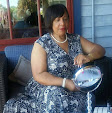
Their Eyes Were Watching God by Zora Neale Hurston is my all-time favorite book because it made me believe in the possibilities. I read TEWWG at a time when I was finding my way as a writer. TEWWG showed me the complexity of both language and art. The dialect titillated my sensibilities and brought me back to a place where Blacks governed their own lives, albeit hard times. Janie, the lead character is a character that came into her own and was finding herself. I, too, was at a place in my life of finding myself. Janie’s journey of discovery was my discovery of language and how it speaks to one’s life. TEWWG gave me license to believe that I could write. I saw in myself the pioneer. This book brought out the womanist, yet feminine as Janie was a pioneer in black womanist movement.
I read the book for the first time almost 20 years ago for an English class after I had returned to college for a liberal arts degree. This was also around the time I began to take my writing seriously. My daughter was about ten years old and while she still required my attention, she was growing up and becoming more independent. Up until that time my writings consisted of journaling and an occasional short story. But now I felt I was ready to write longer fiction and made my first attempt at novel writing. Writing in the first person, my work-in-progress was called simply “My Mother’s Homeland” set in either Haiti or Martinique, I changed back and forth, oh boy. But I knocked out some pages that had people asking me, “Is this a true story?”
It was then I began to believe in the power of my writing and the possibilities. My desire and need for writing grew immeasurably and I was knocking out pages and overwhelmed with possible topics. Like Janie, I was coming into my own, becoming my own woman as a writer. This also was around the time my father was dying of cancer. His impeding death and the turmoil in the last few years of his life, his moving back to Little Rock, and my awakening was overwhelming at times. But through it all I knew my dad had faith in my writing abilities. He believed I could. Janie had to conquer her fears of navigating the 130s south as a poor, black woman without a man. Her burgeoning independence made me realize that I had the fortitude to step out and begin to pursue my dreams. Janie became my shero.




